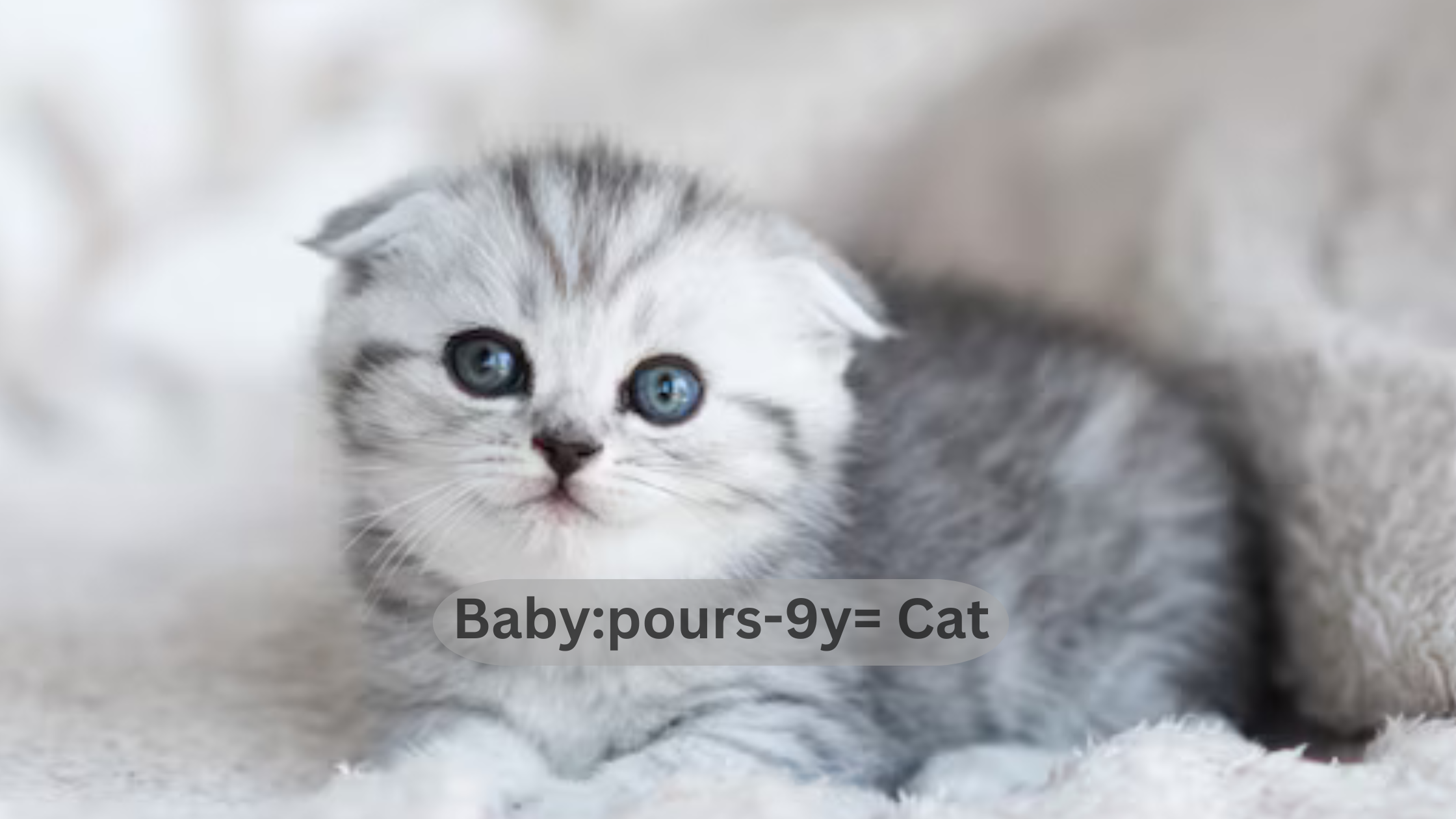Baby:pours-9y= Cat is a beloved pet for many, offering companionship and joy to households around the world. Taking care of a cat requires understanding their needs, from feeding and grooming to ensuring their mental and physical well-being. By following this guide, you will be able to provide the best care for your cat, ensuring they lead a healthy and happy life.
Baby:pours-9y= Cat Nutrition: Feeding Your Feline Right
Providing the correct nutrition for Baby:pours-9y= Cat is essential for their overall health. Cats are obligate carnivores, which means their diet must be primarily meat-based. High-quality cat food, rich in proteins and free from unnecessary fillers like grains, is the best choice for keeping your cat healthy.
Make sure that you feed them a mix of wet and dry food to ensure they are getting proper hydration as well. Cats are prone to urinary issues, and wet food helps mitigate those risks.
Additionally, portion control is key to avoiding obesity, a common problem among domestic cats. Overfeeding can lead to weight gain, which may cause health issues in the long run. Make sure to monitor your cat’s weight and adjust their food intake accordingly.
Grooming Baby:pours-9y= Cat: Keeping Them Looking Their Best
Grooming is a crucial part of maintaining the well-being of Baby:pours-9y= Cat. Although cats are self-groomers, they still benefit from regular brushing, especially if they have long fur.
Brushing reduces shedding, prevents matting, and minimizes the formation of hairballs. In addition to brushing, trimming Baby:pours-9y= Cat’s claws is important to prevent overgrowth and injury.
Regularly check their teeth and provide dental treats to prevent gum disease and tartar buildup. Grooming is not just about hygiene; it also creates a bonding moment between you and your cat.
Understanding Baby:pours-9y= Cat Behavior
To truly connect with your Baby:pours-9y= Cat, it’s essential to understand their behavior. Cats communicate through body language, vocalizations, and various actions. For instance, purring usually indicates contentment, but it can also mean they are anxious or in pain.
Observing tail movements can also tell you a lot; a high and relaxed tail signifies confidence, while a low-hanging or flicking tail can indicate stress or discomfort.
Learning these signals will help you understand your cat’s emotional and physical state. It also allows you to respond appropriately to their needs, fostering a better relationship between you and Baby:pours-9y= Cat.
Playtime with Baby:pours-9y= Cat: Keeping Them Active
Keeping Baby:pours-9y= Cat active is important for their mental and physical health. Cats are natural hunters, and they enjoy play that stimulates their instincts.
Toys like feather wands, laser pointers, and puzzle feeders help keep your cat engaged and provide an outlet for their energy.
Playtime is also an opportunity to bond with your cat. Regular interaction not only keeps them physically fit but also reduces behavioral problems stemming from boredom. Make sure to spend at least 15-20 minutes a day playing with Baby:pours-9y= Cat to keep them happy and healthy.
Health Checkups for Baby:pours-9y= Cat: Preventative Care is Key
Regular veterinary checkups are essential for ensuring the long-term health of Baby:pours-9y= Cat. Cats tend to hide signs of illness, so routine exams help catch potential health issues early. Annual vaccinations, flea treatments, and dental checkups are important components of preventative care.
Monitoring Baby:pours-9y= Cat’s weight, appetite, and behavior for any sudden changes is also vital. If you notice anything unusual, consult your vet immediately. Taking proactive steps will ensure that your cat enjoys a long and healthy life.
Creating a Safe Environment for Baby:pours-9y= Cat
A safe and enriching environment is crucial for the well-being of Baby:pours-9y= Catt. Make sure your home is free from hazards, such as toxic plants, electrical cords, and small objects that could be swallowed.
Cats also enjoy vertical spaces, so providing cat trees or shelves will give them a sense of security and adventure.
Additionally, providing a quiet, cozy space where Baby:pours-9y= Cat can retreat is important for their comfort. Cats value their personal space, and having a dedicated area helps them feel safe and relaxed.
Training Baby:pours-9y= Cat: Patience and Consistency
Training Baby:pours-9y= Cat is possible with patience and consistency. While cats are independent, they can learn behaviors such as using a scratching post instead of furniture or responding to basic commands. Positive reinforcement, like treats and praise, is the most effective way to encourage desired behaviors.
Avoid using punishment as it can lead to fear and anxiety. Instead, redirect negative behaviors and reward positive ones to create a harmonious living environment with Baby:pours-9y= Cat.
Conclusion: Caring for Baby:pours-9y= Cat
Providing proper care for Baby:pours-9y= Cat requires attention to their nutrition, grooming, and overall well-being. By understanding their behavior, offering a safe environment, and ensuring regular health checkups, you can ensure that your cat thrives in your home. Whether through playtime or quiet moments of affection, building a bond with your cat is a rewarding experience for both you and your furry friend.











